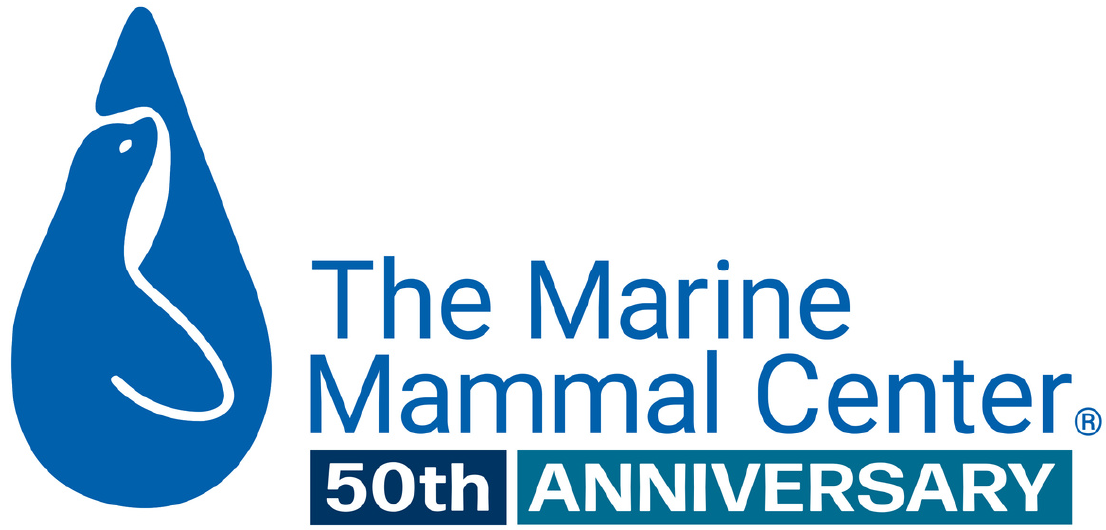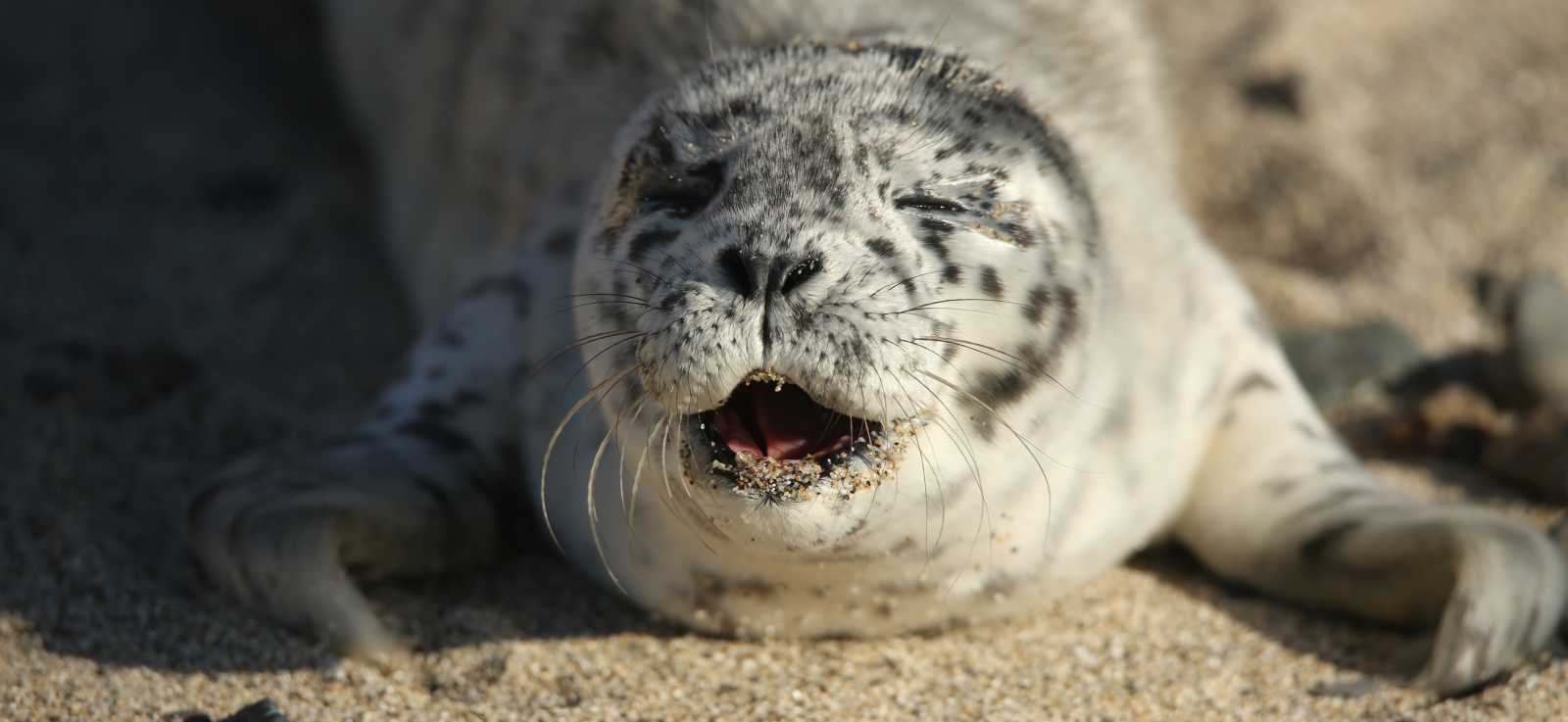
Safe Wildlife Viewing
Humans and dogs disturbing marine mammals on the beach makes it harder to give sick and injured animals a second chance at life.
The Center’s Electronic Animal Record System Team identified that wildlife disturbance by people or dogs was reported (or noted) in more than 250 cases. That equates to 26 percent of all marine mammals rescued and admitted to the Center’s Sausalito hospital in 2024.
Experts on behavior change have gathered survey data from California beaches along the Center’s 600-mile response range. The results show that most people, locals and tourists alike, want to help protect and appreciate our native wildlife. Unfortunately, many are taking actions that can cause more harm than good.
People approaching marine mammals generally fall into one of two categories:
- The “Wildlife Protector,” largely trying to do the right thing by interacting with wildlife.
- The “Experience Seeker,” seeking out an experience with marine life.
To address these challenges, our team is working with community partners and communicating directly with beachgoers, tourists and water sport enthusiasts on how to safely share our shores and local waters with marine wildlife.
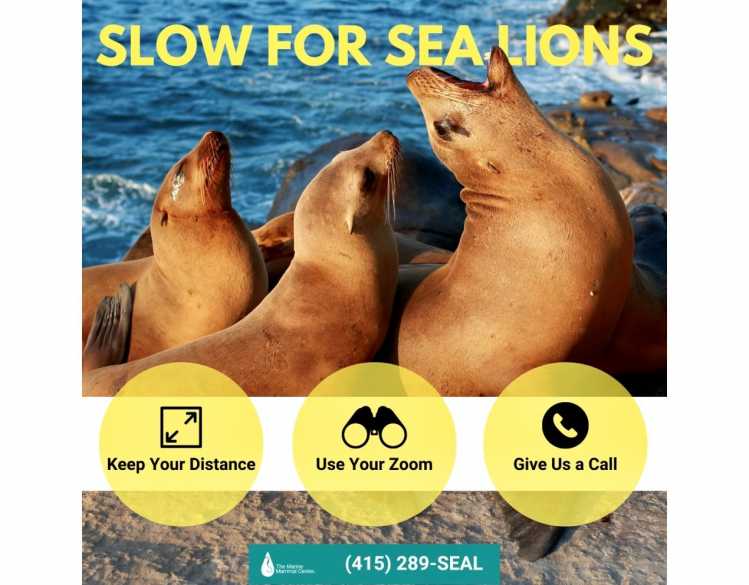

Marine mammal disturbance is both a tourist and a local issue.
Disturbance of marine mammals on the beach can lead to increased animal stress and disruption of rescue operations. These complications hinder our goal of giving these sick and injured marine mammals a second chance at life.
Disturbance has become a year-round problem for marine mammals. Young animals generally experience harassment in the springtime, which is a critical period in their development.
These pups may be abandoned by their mothers before they are fully weaned, and become at risk of starvation. Older, sick marine mammals tend to experience disturbance in the summer and fall months, when they are in critical need of rest ashore.
Protect Animals like Jellybean
When Pacific harbor seal pup Jellybean was spotted in distress in San Simeon, a well-meaning person picked up the seal from the sand while reporting it to our rescue hotline. Unfortunately, this type of behavior is illegal and may result in the pup being abandoned by its mother, who may be just offshore searching for food.
Jellybean was rescued on by trained responders from the Center’s Morro Bay Field Office. She was treated at our marine mammal hospital for malnutrition, maternal separation, umbilical cord infection and an esophageal abnormality. Jellybean was released several months later at Chimney Rock in Point Reyes National Seashore.
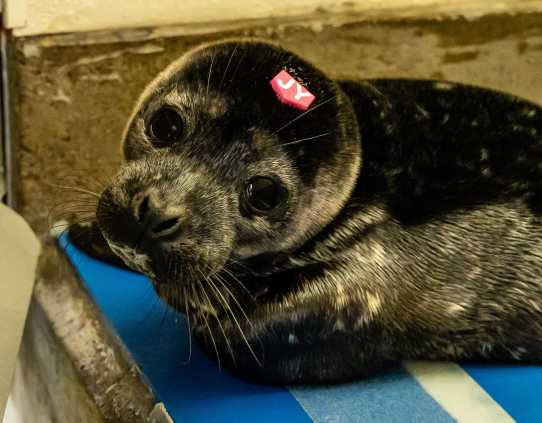
2024 Disturbance Breakdown by County (all species)
While human wildlife disturbance is a significant problem across the entire northern and central California coast, there are several areas that are hotspots.
The Center is targeting specific areas along the California coast and working with partners to increase awareness amongst the public and test new messaging that can help protect marine mammals and preserve their habitats.
Monterey – 53 cases (21% of all cases)
Santa Cruz – 36 cases (14% of all cases)
San Luis Obispo – 80 cases (31% of all cases)
San Mateo – 29 cases (11% of all cases)
Marin – 25 cases (10% of all cases)
Sonoma – 9 cases (3% of all cases)
San Francisco – 16 cases (6% of all cases)
Mendocino – 7 cases (3% of all cases)
Contra Costa – 1 cases (<1% of all cases)
Alameda – 1 case (<1% of all cases)
Data collected from The Marine Mammal Center’s Electronic Animal Records System.
Marine Mammal Disturbance in the News
{"type":"manual","image":"\/Animals\/Patients\/Harbor seals\/cropped-images\/hs-by-bill-hunnewell-c-the-marine-mammal-center-3-363-0-2212-1728-1711981631.jpg","transparent":"0","alt":"harbor seal pup","label":"","text":"SF Gate: Experts deem Bay Area a \u2018hotspot\u2019 for harassment of seals, other marine mammals ","link_text":"","link_url":"https:\/\/www.sfgate.com\/local\/article\/bay-area-wildlife-harassment-marine-mammal-center-18138528.php","page_id":null,"person_id":null,"pub_id":null,"news_id":null,"event_id":null}
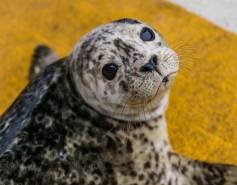
SF Gate: Experts deem Bay Area a ‘hotspot’ for harassment of seals, other marine mammals
Read More{"type":"manual","image":"\/Animals\/Patients\/Northern fur seals\/2022\/cropped-images\/nfs-juicebox-by-bill-hunnewell-c-the-marine-mammal-center-578-0-2865-2238-1667347585.jpg","transparent":"0","alt":"northern fur seal Juicebox","label":"","text":"LA Times: These are the \u2018hot spots\u2019 in California for seal, sea lion harassment ","link_text":"","link_url":"https:\/\/www.latimes.com\/california\/story\/2023-06-09\/these-are-the-hot-spots-in-california-for-seal-sea-lion-harassment","page_id":null,"person_id":null,"pub_id":null,"news_id":"227","event_id":null}

LA Times: These are the ‘hot spots’ in California for seal, sea lion harassment
Read More{"type":"manual","image":"\/Animals\/Patients\/Elephant seals\/cropped-images\/es-photo-by-bill-hunnewell-c-the-marine-mammal-center-1-547-115-3357-2623-1605065207.jpg","transparent":"0","alt":"northern elephant seal","label":"","text":"KSBY: Rescue group says marine mammal harassment is on the rise in California. Who is responsible? ","link_text":"","link_url":"https:\/\/www.ksby.com\/morro-bay\/rescue-group-says-marine-mammal-harassment-is-on-the-rise-in-california-who-is-responsible","page_id":null,"person_id":null,"pub_id":null,"news_id":null,"event_id":null}

KSBY: Rescue group says marine mammal harassment is on the rise in California. Who is responsible?
Read More{"type":"manual","image":"\/Animals\/Patients\/California sea lions\/cropped-images\/csl-by-bill-hunnewell-c-the-marine-mammal-center-0-0-3110-2430-1639515407.jpg","transparent":"0","alt":"California sea lion pup","label":"","text":"KCBX: Marine mammal harassment on the rise; SLO County leads in severe cases ","link_text":"","link_url":"https:\/\/www.kcbx.org\/environment-and-energy\/2024-03-13\/marine-mammal-harassment-on-the-rise-slo-county-leads-in-severe-cases","page_id":null,"person_id":null,"pub_id":null,"news_id":null,"event_id":null}

KCBX: Marine mammal harassment on the rise; SLO County leads in severe cases
Read MoreHeader photo © Rob Cala
